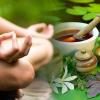Congresso di aggiornamento e divulgazione medico scientifica
Programma definitivo aggiornato
Epigenetica ambiente e salute, Nutrizione e nutraceutica
Dalla Medicina alla fisica o dalla fisica alla medicina?
La riprogrammazione cellulare e il nuovo
Paradigma per la prevenzione
L’uomo ha l’età dei suoi mitocondri
Dalla ricerca di base alla pratica clinica
Presentazione del MASTER sull’EPIGENETICA
Il Convegno si terrà il 9 settembre 2018 a Bologna
presso :
NOVOTEL
BOLOGNA FIERA Hotel
Via Michelino,73 , 40127 BOLOGNA, ITALY
Tel : +39 (0) 51 63 77 707 Fax : +39 (0) 51 51 92 24
Uscita autostrada n. 8
Data Domenica 9 Settembre 2018
Orario: 9.00 – 13.00 14.00 – 18.00
Inizio registrazione ore 08.20
Prenotazione obbligatoria - Segreteria Scientifica
This email address is being protected from spambots. You need JavaScript enabled to view it. - 3356481268
Segreteria organizzativa per le iscrizioni
AKESIOS S.r.l.
Per iscrizioni :
This email address is being protected from spambots. You need JavaScript enabled to view it.
0521647705
Le ricordo che l’iscrizione è obbligatoria e gratuita
Per i primi 100 iscritti vi è l’opportunità di riservare LIGHT LUNCH + TEST EPIGENETICO (valore 120 Euro) a una tariffa di € 50,00 (IVA inclusa) – pagamento da effettuarsi in sede il giorno del Congresso.
Oppure solo il lunch (pausa pranzo) al prezzo di 25 Euro
Al fine di perfezionare l’iscrizione è necessario cliccare al seguente link e completare la registrazione con i suoi dati e con i servizi scelti (solo iscrizione oppure iscrizione + Light Lunch e test epigenetico)
Modulo per iscrizione diretta eventualmente da copiare e incollare sul browser :
https://iscrizioni.akesios.it/UserProfile.asp?IDEvento=2866&noflag=
https://iscrizioni.akesios.it/Login.asp?IDcommessa=EPIGENETICA%20AMBIENTE%20E%20SALUTE%20&Lang=IT
08.20 Registrazione dei partecipanti
Saluto delle autorità
08.45 Introduzione: Dalla ricerca di base alla pratica clinica
Moderatori: Fabio Burigana; Alberto Ugo Caddeo
09.30 Esteban Peiró Monzó
Epigenetica: un nuovo strumento professionale
10.00 Dott. Massimo Bonucci
La medicina integrata, nutrizionale e nutraceutica per i
pazienti -
10.30 La medicina mitocondriale ed il ruolo epigenetico
dell’alimentazione e della nutraceutica alla luce delle
nuove evidenze scientifiche. - Massimo Spattini
11.00 Conoscere i propri rischi per migliorare lo stile di vita:
Cosa, come quando e quanto fare - Mauro Mario Mariani
11.30 Lezione magistrale
“Epigenetica, Medicina, Biofisica e biorisonanza”
Pier Giorgio Spaggiari
12.00 Lezione magistrale
Corso di aggiornamento e formazione sull’epigenetica
nell’era dell’inquinamento 4.0 dal punto di vista chimico,
biochimico e biofisico - Carlos Orozco
12.40 Esperienza Clinica su nutrizione e nutraceutica dal punto di vista epigenetico
Maristella Marchetti
13.10 Lunch
14.10 2° PARTE - LA NUTRACEUTICA NELLA MODULAZIONE EPIGENETICA
Moderatori: Fabio Burigana; Alberto Ugo Caddeo
14.20 L’importanze della nutrizione e della nutraceutica nella prevenzione
Marta Ciani
14.50 Lezione magistrale
La carenza di ossigeno nelle patologie infiammatorie
Mauro Miceli
15.30 Lezione Magistrale
Inflammasoma e sua modulazione(lezioni dalle oroflogosi)
Vincenzo Aloisantoni
16.10 Lezione Magistrale
Dalla genetica all’epigenetica : una nuova possibilità di
fare prevenzione - Damiano Galimberti
16.50 Lezione Magistrale La riprogrammazione cellulare epigenetica nella
prevenzione e supporto nella medicina antiage e nella
neurodegenerazione - Pier Mario Biava
17.20 Corso di formazione Teorico Pratico su epigenetica, nutraceutica e sulla
interpretazione del test “REPORT” nella pratica clinica dal punto di vista biofisico.
Carlos Orozco Sthephan Peiro Maristella Marchetti
18.30 Chiusura Congresso - Rilascio attestati
Un medico saggio disse:
"La migliore medicina è l'amore ".
Qualcuno gli domandò:
"E se non funziona?"
Lui sorrise e gli rispose:
"Aumenta le dosi"
 Integrative Medicine: Complementary medicine (CM) or integrative medicine (IM) is when alternative medicine is used together with functional medical treatment, in a belief that it improves the effect of treatments. However, significant drug interactions caused by alternative therapies may instead negatively influence treatment, making treatments less effective, notably cancer therapy.
Integrative Medicine: Complementary medicine (CM) or integrative medicine (IM) is when alternative medicine is used together with functional medical treatment, in a belief that it improves the effect of treatments. However, significant drug interactions caused by alternative therapies may instead negatively influence treatment, making treatments less effective, notably cancer therapy.